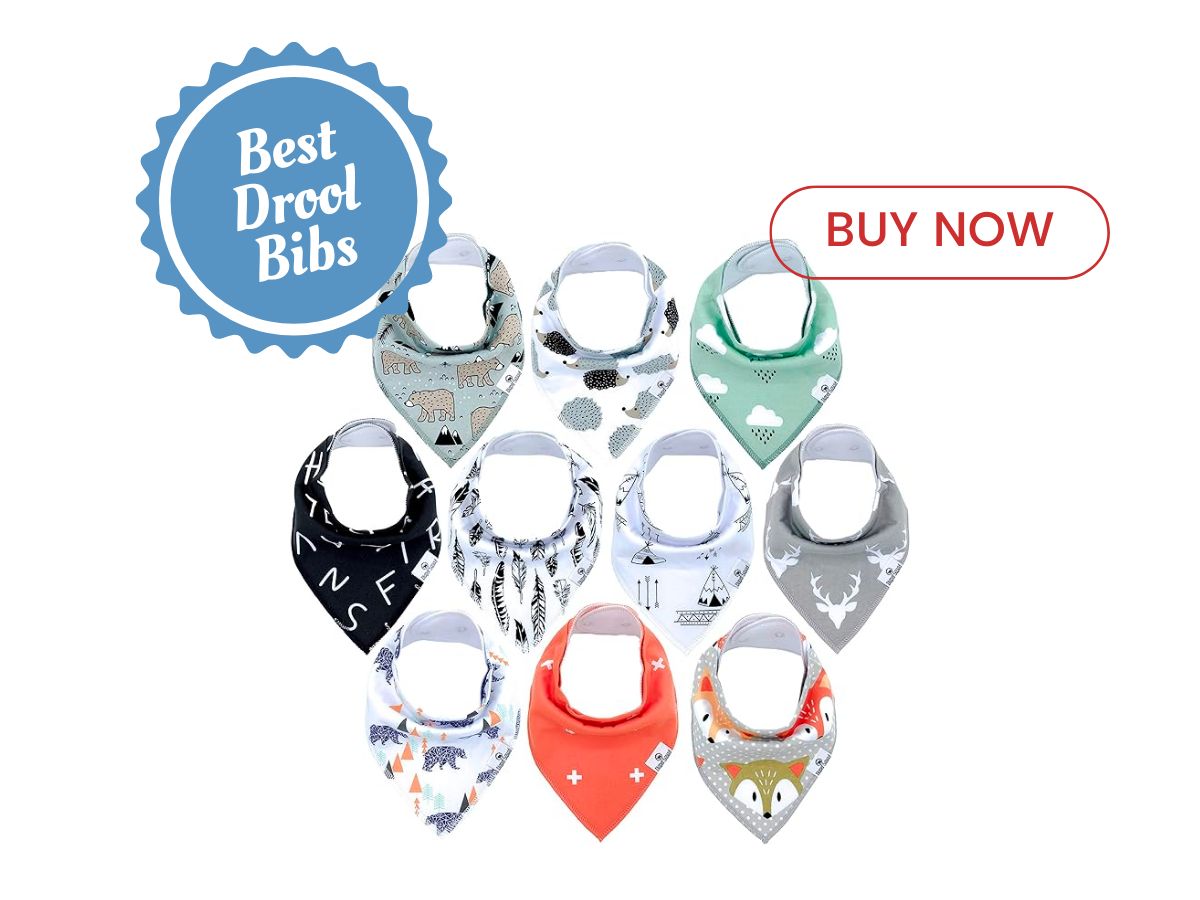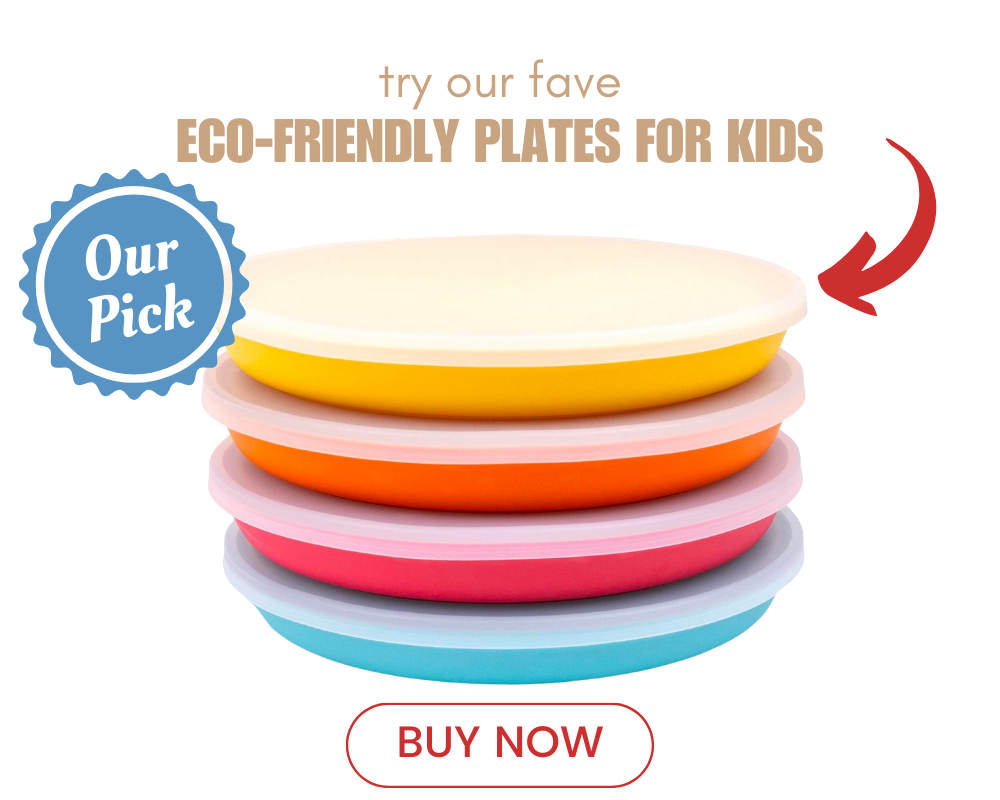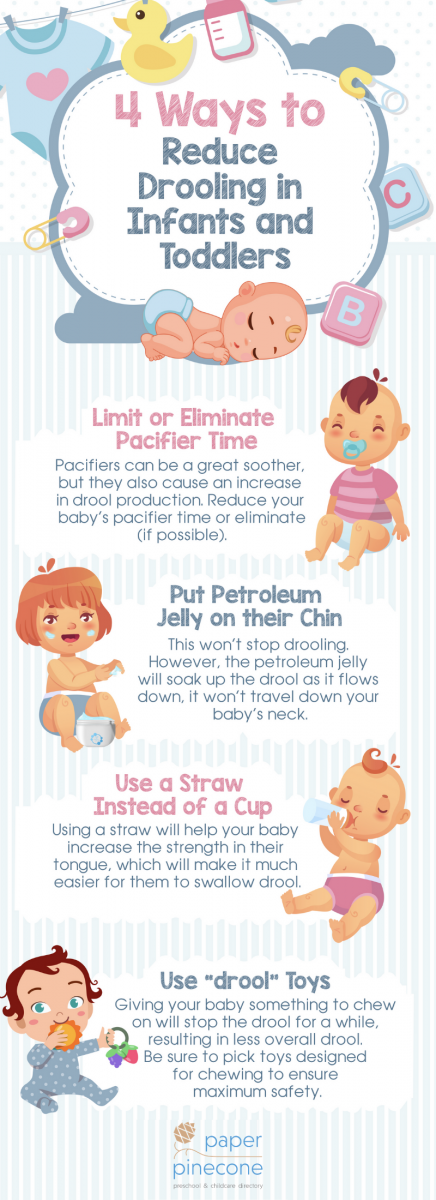Facts About Your Drooling Baby. Is it natural?
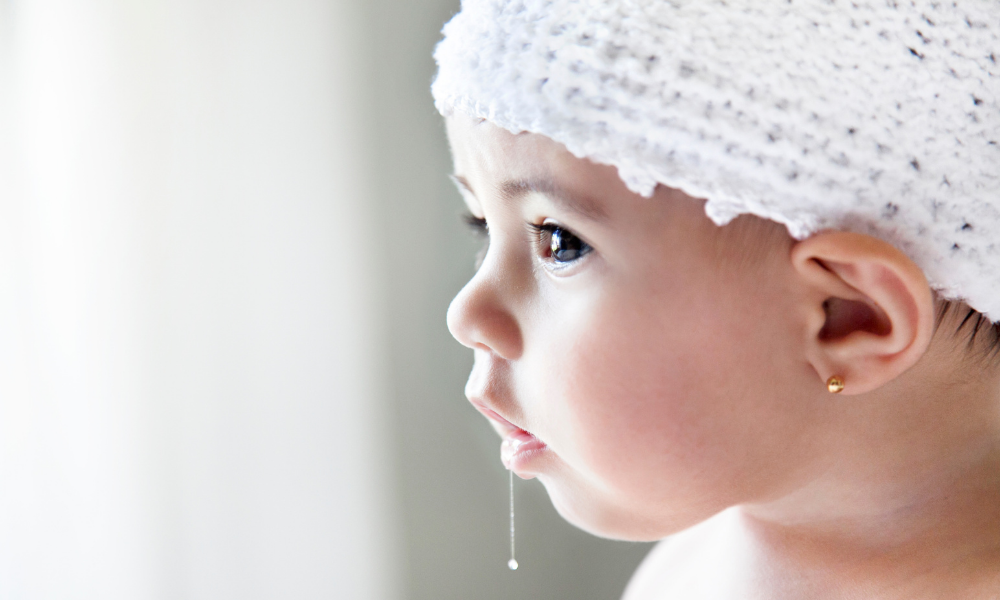
Published Date: 12/28/23
What you need to know about your drooling baby
Jump to:
What can I do to keep my baby's face and clothes dry?
How can I prevent and treat drool rash?
Should I be concerned about my baby's drooling?
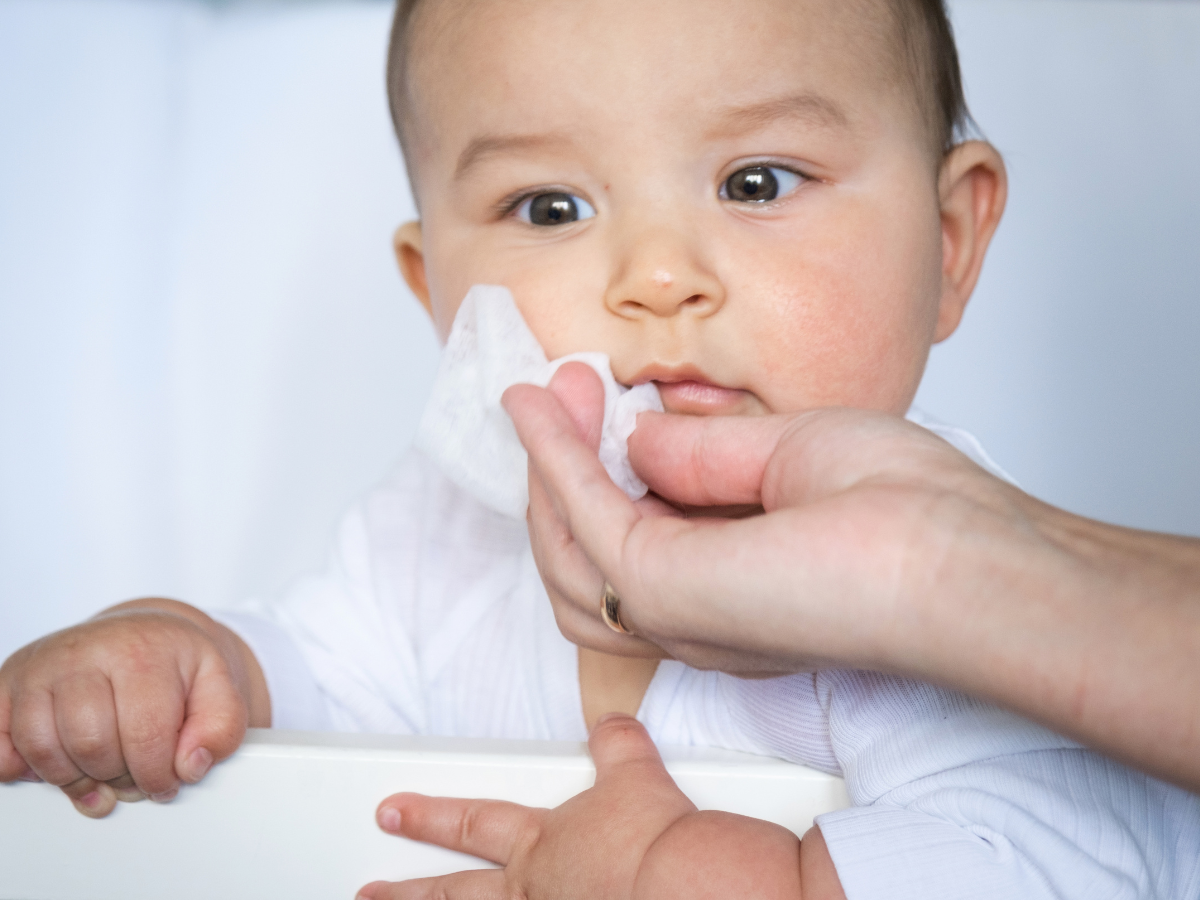
Babies drool. Sometimes you may feel that your baby drools more than other babies. That may be true, or it may just be because at times babies drool A LOT. Most of the time babies drooling excessively isn’t a concern but occasionally, it’s indicative of a problem that needs to be addressed.
YOU'LL ALSO ENJOY: BEST SHOES FOR NEW WALKERS
How do you know when your baby drooling excessively is an issue you need to follow up on or when it’s just typical development? Read on to find out some great facts about why babies drool and how much is too much.
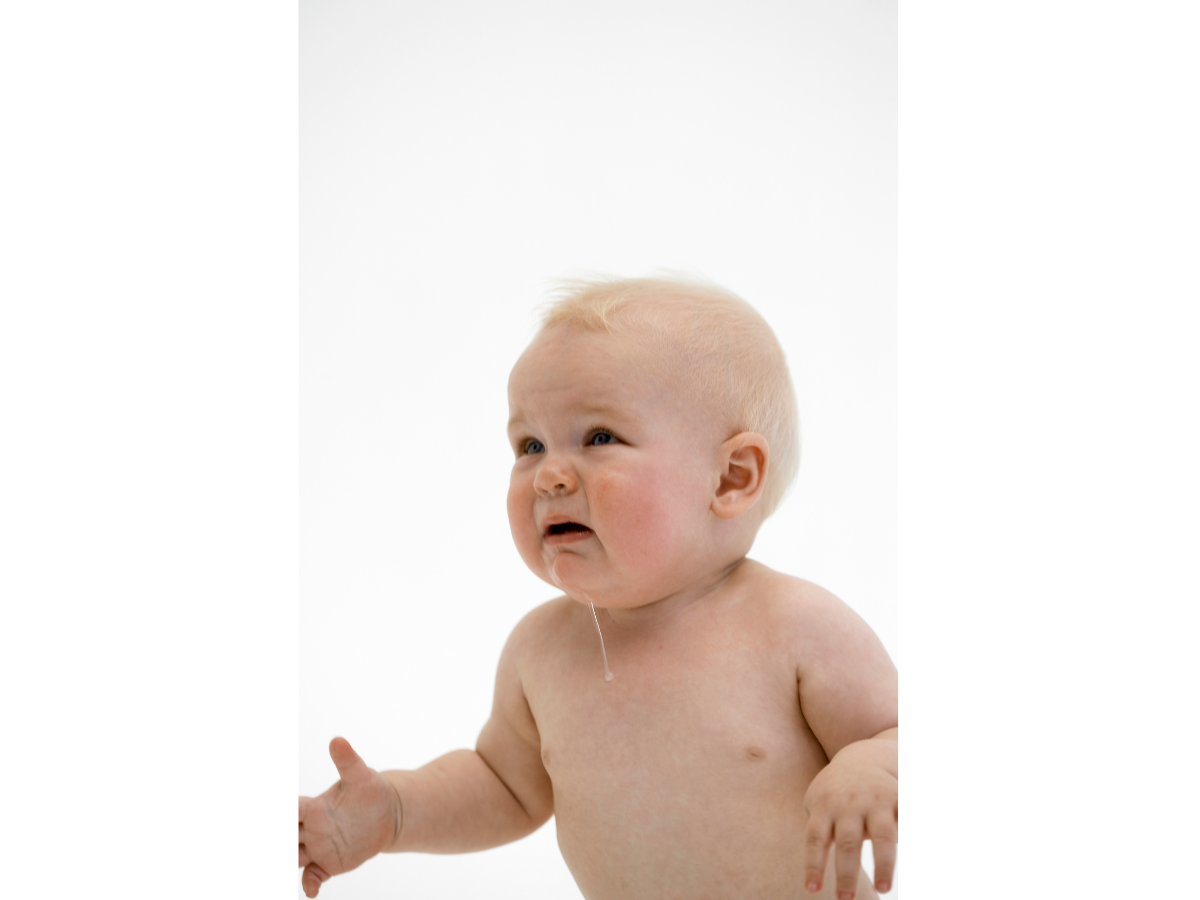
Why Does My Baby Drool Anyway?
When your baby is somewhere between three and six months old, you might notice that suddenly they're drooling, and drooling quite a bit.
Drooling occurs when excess saliva is produced and not swallowed. Humans have six salivary glands which are located in the bottom of the mouth, the cheeks, and near the front teeth. It’s typical to produce two to four pints of saliva daily (that’s about 1-2 liters for our metric friends). There are two primary reasons babies produce excess saliva and two primary reasons they drool. And while your friend might see your baby drool and say they're cutting teeth, that's not necessarily the case.
DOES YOUR BABY CRY WHEN YOU PUT HER DOWN? FIND OUT THE REASON WHY HERE.
Why babies produce excess saliva
Development of the digestive system
When your baby is born, she or he does not have a fully developed digestive system. As their digestive system develops, babies drool. You might feel like drool is icky and drippy, but it does serve a purpose, which is to help your baby break down food and nutrients on the way to the stomach.
“The capacity for a baby’s stomach right at birth is about half an ounce to 1 ounce. By the end of the first week, a lot of babies are eating twice that. It’s a rapid stretch to hold more.”
- Edward Pickens, MD, Pediatrician, UNC Health
Teething
When your baby is teething, you might find she or he is putting more things in their mouth and gnawing at them. Often babies do this as a way to soothe sore gums when a new tooth is breaking through. This increased mouth activity signals the brain to increase saliva production and you’ll notice your baby drooling more.
"The earliest the first tooth generally makes an appearance is around 4 months of age. Most commonly, the first teeth come in around six months of age, but babies can start teething anywhere from six to 13 months."
- Michelle Place, Certified Registered Nurse Practitioner, Pediatrics
The reasons why babies drool
Underdeveloped muscles
As nearly everyone knows, muscles and coordination develop when you use them. As adults, swallowing is easy - we’ve had years of practice. But for babies, the muscles used to swallow haven’t yet had time to gain strength. In fact, the muscles around your babies mouth and their swallowing muscles aren’t fully developed until they are between 18 and 24 months old! Babies aren’t able to swallow their saliva fast enough, so drool occurs.
Teeth (or lack thereof)
Your teeth act like a dam for your saliva, helping it pool in the bottom of your mouth before you swallow it. While babies are still getting their chompers, there’s little to prevent the saliva from spilling out and becoming drool.
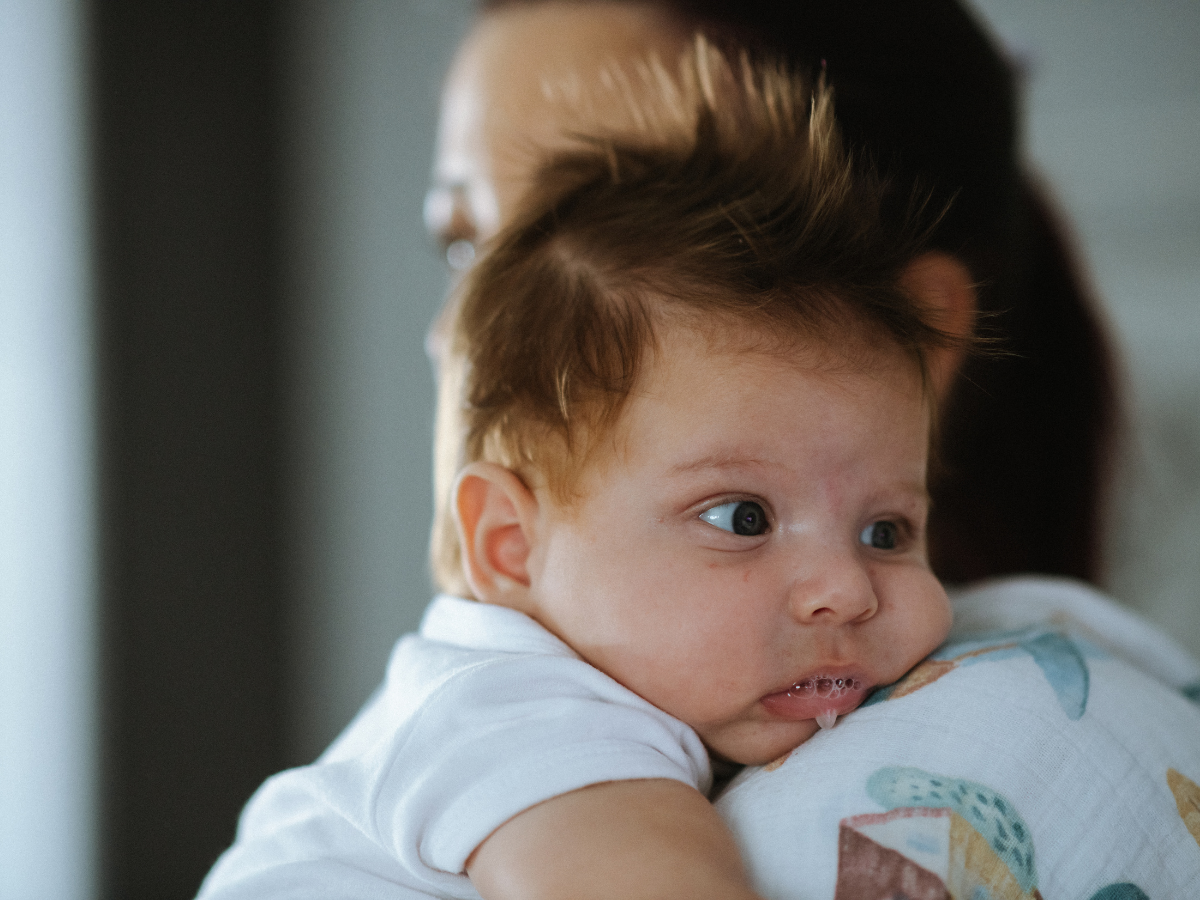
What Can I Do to Keep My Baby’s Clothes and Face Dry?
As you can probably guess, bibs are the best defense against wet clothing from your baby’s drool. Choosing bibs for your baby seems simple - pick one out with a cute pattern and you’re done with it. But some bibs are great for drool and some are great for feeding.
For babies who drool a lot, an absorbent terry cloth bib will soak up the most saliva. It’s important that the bib has multiple layers or you’ll find your child’s shirt still will get quite wet.
Our favorite drool bib from Amazon!
To keep your baby’s face dry and prevent drool rash, wipe with the bib or another soft cloth. Make sure you dry the folds of your baby’s neck as well when drool is excessive. If your child has eczema or sensitive skin, a terry cloth bib may be too rough on them. In that case, opt for a 100% cotton bib, which will be gentler. Again, look for multiple layers.
It’s critical that you never put your baby to sleep while wearing a bib, and you should remove it promptly if your baby falls asleep. Bibs pose a strangulation risk and don’t fall within safe baby sleep practices.
How Can I Prevent and Treat Drool Rash?
Sometimes, especially in winter months, your baby may develop a rash on his or her cheeks, chin, or even neck from the combination of drool, dry weather, and wiping. This can be uncomfortable for your child, but don’t worry - there are a few things you can do a few things to keep the rash away and treat drool rash if it appears.
Keep skin dry
Try to keep the skin dry and use soft cloths to wipe away drool. You may need to experiment with fabrics so they don’t irritate her or his skin.
Use a barrier cream to prevent drool rash
Check with your pediatrician first, but barrier products like Aquafor and Vaseline can prevent rash from occurring and soothe your baby’s skin if drool rash is present. if you don’t want to use a petroleum-based emollient, alternatives do exist, however you can expect a higher price tag and finding a fragrance-free version may be difficult.
Use fragrance-free detergent
Often a baby’s skin is sensitive to fragrances in laundry detergent and drool rash can be irritated by harsh chemicals. Wash bedding, clothing - including yours - and bibs in a baby-friendly fragrance-free detergent.
IS BREAST REALLY BEST? ENDING THE DEBATE
Monitor pacifier use
Every baby is different. Some babies drool more when they use pacifiers and some actually drool less. If your baby uses a pacifier you can watch to see what happens and limit pacifier use while they have a drool rash.
Check bottles for irritants
If formula leaks out of a bottle while your baby is feeding, it may irritate her or his drool rash, so makes sure that’s not occurring. The exterior of the bottle may also rub against your baby’s face and irritate the space or introduce germs to the drool rash if the bottle is not sterile.
Use breastmilk to soothe drool rash
Liquid gold! Breast milk has so many nutrients and restorative properties. There are moms everywhere who swear by its ability to soothe a drool rash.
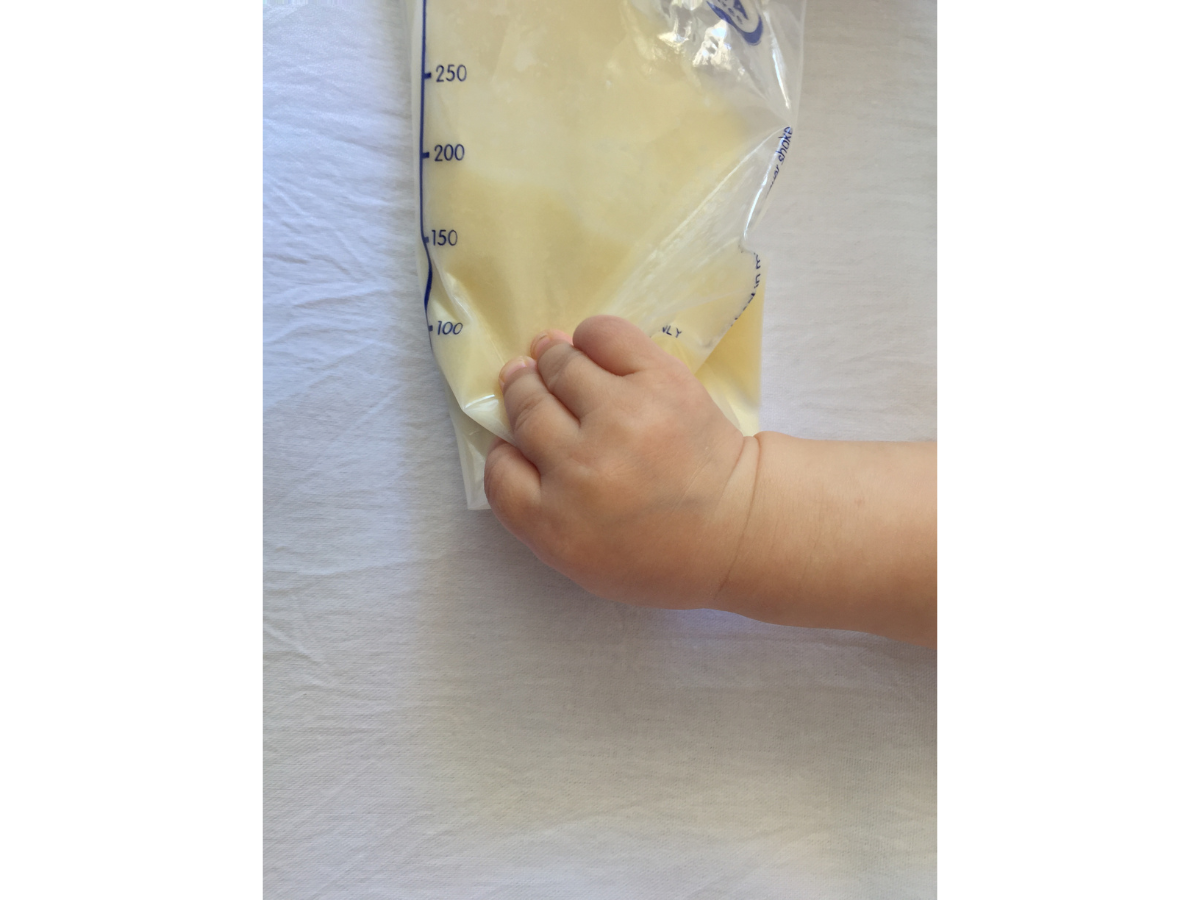
Treat drool rash with cream
There are many different moisturizing creams on the market that may help soothe your baby’s drool rash and speed up healing. Check with your pediatrician to determine what’s safe for your baby.
As they say, an ounce of prevention is worth a pound of cure, but sometimes, drool rash happens regardless. If it does, you can expect it to clear up relatively quickly.
THE FASCINATING HISTORY OF SLEEP TRAINING
Should I Ever Be Concerned About Drooling?
There are a few times that your baby’s drool may be a sign of something else going on that has to be monitored or addressed.
Dehydration
If the weather is hot and your baby is drinking less than she or he typically does, drool can become thick. Thick drool is a sign of dehydration so you should immediately increase your child’s liquid intake and monitor their diapers. If your baby isn’t producing enough wet diapers or you’re unable to hydrate him or her, contact your pediatrician to determine the best course of action.
Illness
At times, drooling can also be a sign of illness. If your baby’s drool increases and he or she is fussy, you might assume teething is the culprit, but look for signs of a sore throat as well. Your body produces extra saliva when your throat is irritated to soothe it. Since babies have limited ways of communicating, keep an eye on her or him grabbing at their ears or neck.
Allergies
Allergies can cause excessive saliva production and drooling, as the body is trying to flush out toxins. Watch for signs of allergic reactions to foods once your baby has started solids and observe if excessive drooling occurs after exposure to animals or certain environments. Most allergic reactions can be safely treated at home but check with your doctor before giving your child antihistamines or other allergy medications. Call 911 if your child has an anaphylactic reaction, which generally occurs within minutes of being exposed to an allergen.
Choking
Any signs of choking while drooling should be taken seriously. Check for obstructions and call 911 or your local emergency number. Do not hesitate to get your baby immediate attention if something appears to be wrong or if she or he is having difficulty breathing.
Stroke, neurological disease, facial paralysis
While very rare in babies and children, strokes, neurological diseases, and paralysis from diseases like Bell’s palsy can occasionally occur. They’re not things to worry about on a day-to-day basis but shouldn’t be completely ruled out if your baby has other symptoms that indicate a problem. Rest assured, however, that your baby’s drool is unlikely to be from something serious.
Final Thoughts
Drooling is a natural response to growth and development and some babies naturally drool more than others. By around age two, most children have stopped drooling, since their digestive system is fully developed, and they have most of their baby teeth.
Use soft cloths and bibs to keep your baby’s face and clothes dry, do your best to prevent drool rash, and treat drool rash appropriately if it occurs. Check with your pediatrician for specific treatments she or he recommends. While most often drooling is simply from teething or development, watch for signs of something more serious and contact your doctor or call emergency services if you have more significant concerns.
Paper Pinecone is the #1 most trusted childcare directory giving parents access to the best preschools and best daycares near you. Parents always search free and childcare providers always list free. Send inquiries about the best daycares and preschools to [email protected].
This post may contain affiliate links.
- stacey's blog
- Log in or register to post comments
